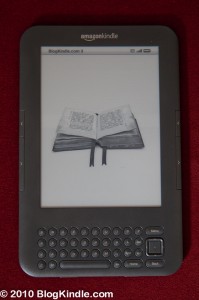
When I was in high school about 10 years ago, the only solution to avoid lugging around super heavy books was to make extra trips to your locker, or use a rolling book bag. Rolling book bags should have been more adequately named “rolling hazards.”
Clearwater High School students just got their own personalized Kindles Thursday that are set to replace their textbooks. It is amazing how quickly the Kindle can solve that problem, huh? Each student got a Kindle that was programmed with their own class schedule. They can take notes, look up words in the device’s built in dictionary and use the text to speech feature.
As far as cost goes, the Kindles have saved the school money because it has cut the cost of books. A Kindle is a natural fit for high school students because they are already so technology savvy with texting, Facebook and other technologies. The Kindle makes reading and education so much more engaging and exciting.
My question is, how well will these students take care of their Kindles? Regular textbooks are cheaper to replace and often suffer a great deal of wear and tear. Having a Kindle might just teach the students how to be more responsible because electronics can’t take the amount of wear and tear that regular books can.
I’m surprised that the Kindle DX has not had as much success on college and university campuses so far. I guess it is because are just not that many textbooks available yet. There are ways to digitize textbooks, but they can require destroying the book. It would also not be very cost effective in the end to digitize the book on your own.
It does look promising though that textbooks will soon be available digitally. For science majors especially, who have to lug around really big, expensive books, that would be a lifesaver.
I think the biggest hold-up for Kindles being used more widely in education (and especially by those doing research) is the Kindle’s use of location numbers rather than page numbers. I just finished my doctoral thesis earlier in the year and would have loved using my Kindle, but I couldn’t because all of the highlighted quotes I pulled out listed only a location number which is not an acceptable academic citation. There’s also the issue of getting a group of people to the same page if some are using Kindles and some are using the physical book. In my opinion, Kindle ought to offer the option of either using location numbers or using the actual page numbers from the most recent published version of the book.
My understanding is that the primary reason Kindles didn’t catch on in college was the fact that at the schools where it was tried, the students were well adapted to textbook styles of study. Margin notes, rapid page scan, and such are all learned techniques for manageing the information that they had, and which they could not replicate satisfactorally on a Kindle.
Starting with high school students is a natural. This will cause them to develop a new set of skills, tailored for the Kindle platform and the ebook system of browsing and searching. They will develop a new set of study habits for the digital age, and come college, will likely prefer the Kindle (or some other electronic solution) to a paper book for their classwork.
The Kindle is great for reading a newspaper, a magazine, or a novel. However, for schoolwork you have to be able to quickly jump from page to page. As an electronic replacement for schoolbooks, I think a general purpose netbook, iPad, or tablet PC would be ideal.
You ask why the DX has not been spread more in the educational sector. A central problem with the DX is that you cannot annotate PDFs so far. This is an important feature at college level. However, strangely, while the Kindle 3 has this feature, it is not yet available for the DX graphite. Maybe Amazon can add this at some point?
I think The Dx is gonna be the norm in the future. The problem is that is not touchscreen. In School and College you have to be able to write quick notes and to highlight words and sentences easily. Another thing is that textbooks requires color, and is very difficult to adapt textbooks without color. But the benefits of the Kindle are far superior than a textbook.
Simply put, Kindle will not be of much use in an academic setting until it starts using real page numbers. This is one of my 2 or 3 largest complaints. Also, a lot of textbook and university presses have been slow off the mark in making their books available on Kindle. I think once the real page # issue becomes fixed, they’ll come around.